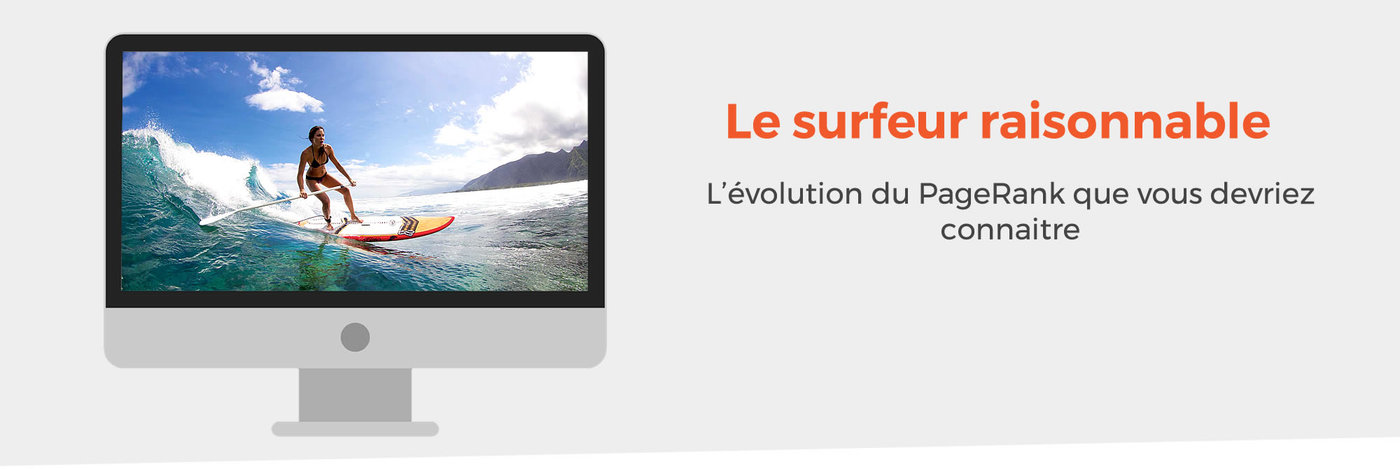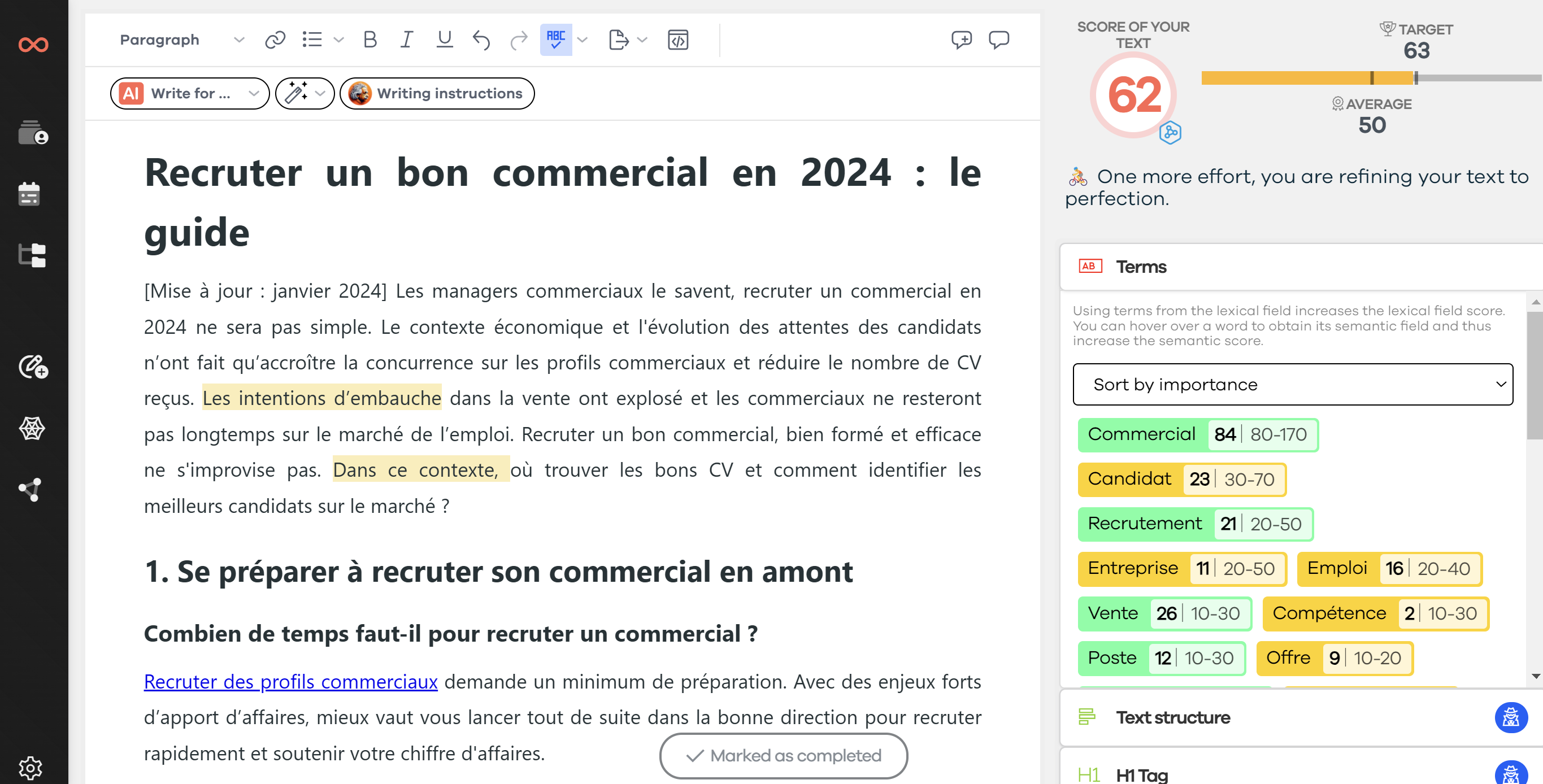Even junior SEO consultants know this, links are the lifeblood of an SEO strategy. By adding links, you increase the popularity of your content, whether these are links from other sites (backlinks) or internal links.
🚀 Express Reading: What You Will Learn in This Article
In this post:
- we remind you of the basic principles of PageRank;
- you discover the importance and notable differences brought by the concept of the "reasonable surfer";
- we detail the characteristics of this principle;
- you understand how to implement good practices to improve your SEO;
- we give you a unique tip to optimize your internal linking.
Happy reading 😊
🤹♂️ Quick Reminder on PageRank
PageRank (PR) is an algorithm used by Google to rank pages in search engine results pages (SERP). For the record, PageRank was named after Larry Page, one of Google's founders. PageRank is a way to measure the popularity of web pages.
PageRank works by counting the number and quality of links to a page to determine the importance of the website. The underlying assumption is that the most important websites have a better chance of receiving more links from other sites.
The concept of PageRank in a few lines:
- If Page0 makes a unique link to Page1, then Page1's PageRank increases significantly
- If Page0 makes numerous links to Page1, Page2, Page3..., then the PageRank received by these pages is distributed
Originally, PageRank used a random model and randomly chose which link to click on. Thus, the position of the links (content, menu, at the top of the page or at the bottom) was not taken into account.
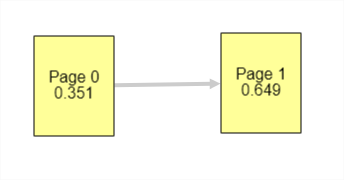
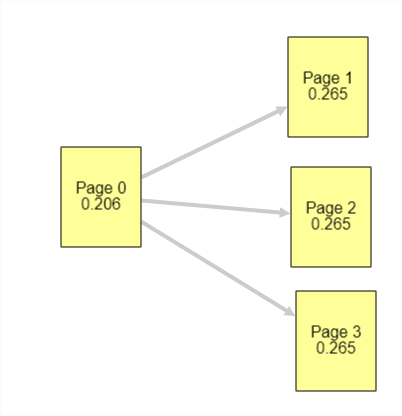
Simplified Principle of PageRank Operation
🏄♂️ What Changes with the Reasonable Surfer?
In 2010, Google filed a patent[1] that defines the model of the reasonable surfer. This modifies the behavior of PageRank and uses logic to choose a link to follow. There are many interesting methods to determine the relevance of a link based on user experience. To learn more, I invite you to read the article by Creapulse on this subject.
Let's not waste time and see directly what the most important changes are. The position of the link on the page (text, menu...) as well as the characteristics of the link (size, number of words...) are among the factors that have an impact on a page's PageRank.
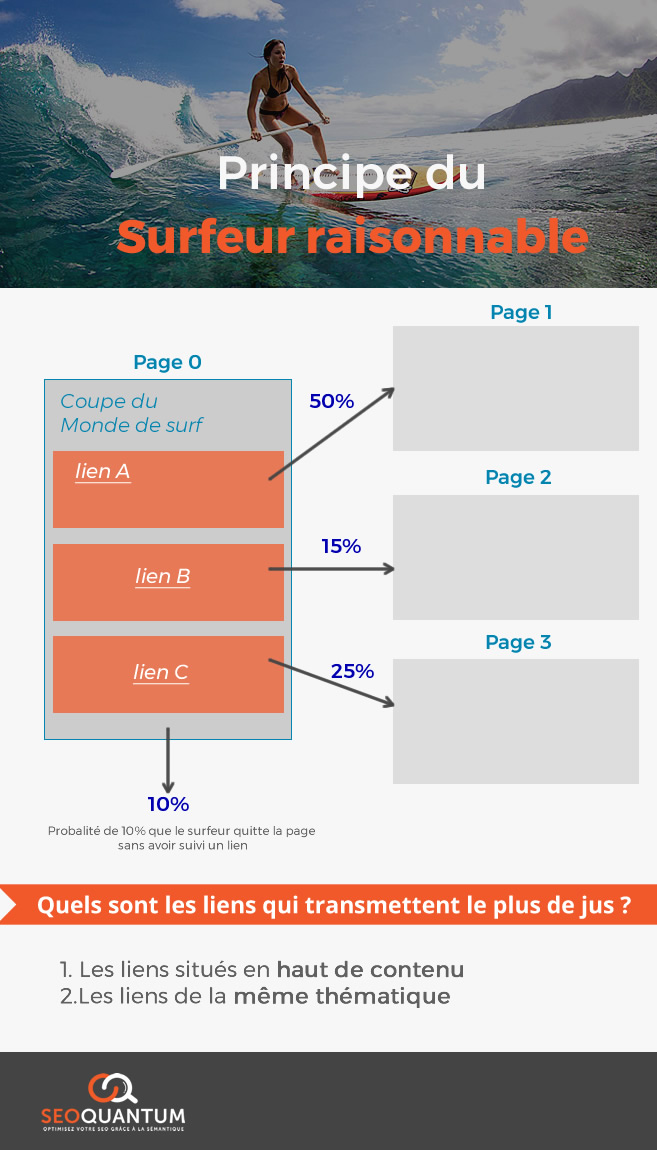
🔎 So, What Are the Characteristics Likely to Be Taken into Account by Our "Reasonable Surfer"?
In my opinion, here is the list of the most effective characteristics to increase the value of the PageRank transmitted by a link (= increase the probability that a link is clicked among others)
- The font size of the link. The bigger the link, the more likely it is to be followed.
- The semantic context of the link. We are talking here about the text surrounding the link (before and after).
- The position of the link on the page. A link that appears above the fold (it is visible without having to scroll) is more likely to be followed than a link located lower in the document.
- The subject of the link anchor text. Is the link associated with the same subject of the page on which it appears?
- The attributes of the link. A link whose color is similar to the background is less likely to be followed than a link that stands out. It is therefore important to monitor the attributes, including bold and italic.
Here are many examples found in the patent.
- Links within a list. The higher the link is in the list, the higher its chances of being followed.
- The number of words used in the anchor text. The more words used in the anchor, the higher the probabilities that the link will be followed.
- The words used in the link. Links whose text is "click here" are more likely to be followed and therefore have a better chance of transmitting the famous "link juice" or SEO juice.
- The type of link. This includes the different types of anchor texts or images. If it's an image, what is its size? The larger the image, the more likely the user is to click on the link.
- Internal or external. Does the link lead to another page on the same site or to a different domain?
The conditions listed above therefore have an impact on the probabilities associated with links. In addition to these two lists, Search Engine Land[2] also provides good recommendations to follow to improve your PageRank:
- A link in an image is clicked more often than a text link.
- A link placed in the textual content is more likely to be clicked than a link appearing in a sidebar menu.
- A link in the footer has almost no influence.
- An affiliate link or one that strongly resembles advertising loses considerable value.
- If the destination page has no relation to the source page, the importance given to the link is less.
❓ Why Is the Reasonable Surfer Important?
We all need to exchange links and encourage our readers to follow these links, so that our pages are well referenced. However, we often forget to pay attention to this type of detail. Few people realize that by placing links at the beginning of an article, it is possible to get a lot more link juice and a higher PageRank.
And even fewer people know that it is possible to influence PageRank by changing the font size of the anchor text. Integrating the link within a large image is also an excellent way to encourage users to click on it.
🎁 A Clever Tip
Here's another tip. It's not in the patent, but it's still applicable. It's about paying attention to the number of links pointing to the same page within the same content. Indeed, I've heard a few times that only the first link in the content is taken into account for PageRank. Thus, the second link would be ignored.
Since it's possible to increase the probability that a link is clicked by increasing the size of its text, or by positioning it at the beginning of the text, then why not place it several times in the same publication. The chances that a user will follow it will thus be higher. If the links are more likely to be followed, the PageRank of the page should increase.
But to do this, I recommend you use page anchor #. According to my tests, Google considers URLs with anchors as different. A link to a page anchor allows you to jump directly to the concerned section, the anchor in the page allows you to directly position the user's browser where you want (at the top, at the bottom, at a title...).
This "evolved" PageRank patent has an effect on the internal (and external) linking strategy. For example, if you have created a page to promote your product, you can place the links pointing to your target page at the top of your posts.
It's your turn! Apply all the advice in this article to significantly increase the effectiveness of your linking (or link building) strategy and the benefits it generates. To start your analysis, I invite you to perform a semantic analysis of your site.
By using the SEOQuantum tool, you get a PageRank score for each of the pages on your website. All you have to do is optimize those with a low score to optimally optimize your internal linking!
🙏 Sources Used to Write This Article
[1] https://patents.google.com/patent/US6285999
[2] https://searchengineland.com/seo-implications-of-googles-reasonable-surfer-patent-44222
Need to go further?
If you need to delve deeper into the topic, the editorial team recommends the following 5 contents:
